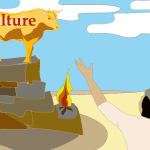Read my review of Chris Tilling’s new book, Paul’s Divine Christology, in the new issue of the Westminster Theological Journal here.
I’m extremely happy to commend to you Chris Tilling’s book Paul’s Divine Christology (Mohr Siebeck, 2012 – but preorder this awesome new edition from Eerdmans for way cheaper!). The Westminster Theological Journal was gracious to publish my review. I want to make one connection that has been at the center of my thought lately: that the second person of the Trinity is יהוה (Yahweh, “the LORD”) of the Old Testament. Scott Oliphint makes this point clearly in his book God With Us.[1]
Charles Hodge comments, “If Christ be Jehovah, and if the name Jehovah implies self-existence, then Christ is self-existent.”[2] Oliphint affirms, “Yahweh is, in fact, the second person of the Trinity, who became incarnate. As such, he is self-existent, as are the Father and Spirit. Because God is self-existent, each person of the Godhead is.”
John Owen further comments,
“It was so represented and made known under the Old Testament, in his personal appearances on various occasions unto several eminent persons, leaders of the church in their generations. This he did as a praeludium to his incarnation. He was as yet God only; but appeared in the assumed shape of a man, to signify what he would be. He did not create a human nature, and unite it unto himself for such a season. . . . So he appeared to Abraham, to Jacob, to Moses, to Joshua, and others; as I have at large elsewhere proved and confirmed. And hereon, also, because he was the divine person who dwelt in and dwelt with the church, under the Old Testament, from first to last, in so doing he constantly assumes unto himself human affections, to intimate that a season would come when he would immediately act in that nature.”[3]
Oliphint likewise affirms, “Once we understand that it is the Son of God, prior to his incarnation, who is interacting with his creation all along, we need not in any way be reticent to affirm those covenantal properties that Scripture seems so easily and seamlessly to ascribe to him. In such assignments, it is preparing us for the climactic representation of the Logos in Jesus Christ.”[4]
Tilling bolsters this approach by arguing that the Son the terminal executor of the character יהוה of the Old Testament. “Tilling demonstrates points of functional continuity between the God-relation of YHWH in the OT and the ‘Christ-relation’ of the risen Lord in the NT. These include Christ-devotion (1 Cor 7:25-38) and YHWH-devotion (Lev 19:2; Deut 7:6; 14:2; 2 Chr 23:6; 35:5), absence of Christ (1 Cor 11:26) and absence of YHWH (Pss 16:11; 21:6; 27:4; 42:2), Spirit of Christ (Rom 8:9-10) and Spirit of YHWH.”[5]
If you’re at all interested in Christology, continuities/discontinuities between the Old and New Testaments, or the relationship between philosophy and exegesis, I recommend that you purchase this book, or at least check it out from your library. It’s a worthwhile addition to the collection of anyone seeking to understand more deeply what it means to preach and worship Christ – Yahweh himself – in the footsteps Apostle Paul.
[1] K. Scott Oliphint, God With Us: Divine Condescension and the Attributes of God (Wheaton, IL: Crossway, 2012)
[2] (Charles Hodge, Systematic Theology, 3 vols. (London: James Clarke, 1960), 1:467. Cited in Oliphint, God With Us, 205.
[3] (John Owen, The Works of John Owen, ed. W. H. Gould, Ages Digital Library CD ed., 16 vols. (Edinburgh: Banner of Truth, 1977), 1:50. Cited in Oliphint, God With Us, 207.
[4] Oliphint, God With US, 207.
[5] Paul Maxwell, review of Chris Tilling, Paul’s Divine Christology, The Westmisnter Theological Journal 76, no. 2 (2014): 471.















